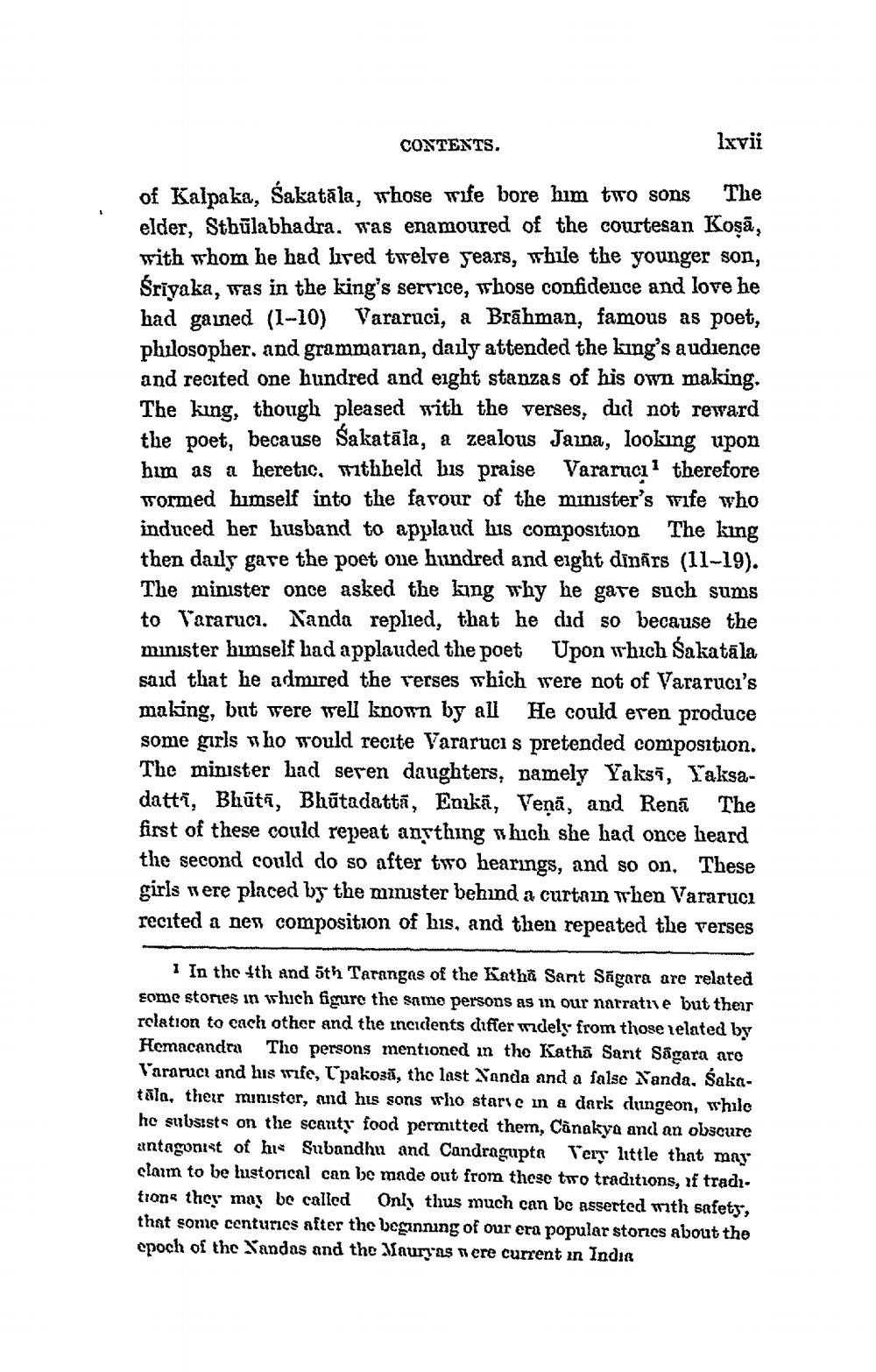________________
COXTENTS.
lxvii
of Kalpaka, Śakatāla, whose rife bore him two sons The elder, Sthūlabhadra, was enamoured of the courtesan Koşā, with whom he had lired twelve years, while the younger son, Śrīyaka, was in the king's service, whose confidence and love he had gained (1-10) Vararuci, a Brāhman, famous as poet, philosopher. and grammarian, daily attended the king's audience and recited one hundred and eight stanzas of his own making. The king, though pleased with the verses, did not reward the poet, because Sakatāla, a zealous Jaina, looking upon him as a heretic, withheld his praise Vararucı: therefore wormed himself into the favour of the minister's wife who induced her husband to applaud his composition The king then daily gate the poet one hundred and eight dinārs (11-19). The minister once asked the king why he gave such sums to Vararuci. Nanda replied, that he did so because the minister himself had applauded the poet Upon which Sakatāla said that he admired the verses which were not of Vararuci's making, but were well known by all He could eren produce some girls who would recite Vararuci s pretended composition. The minister bad seren daughters, namely Yaksi, Yaksadatti, Bhūtā, Bhūtadattā, Enkä, Veņā, and Renā The first of these could repeat anything which she had once heard the second could do so after two hearings, and so on. These girls were placed by the minister behind a curtain when Vararuci recited a nes composition of his, and then repeated the verses
1 In the 4th and 5th Tarangas of the Katha Sant Sāgara are related some stories in which figure the same persons as in our narratne but their relation to cach other and the incidents differ widely from those related by Hemacandra The persons mentioned in the Katha Sant Sagara are Vararuci and his wife, Upakosi, the last Xanda and a false Nanda, Sakatala, their minister, and his sons who stare in a dark dungeon, while he subsists on the scanty food permitted them, Cảnakya and an obscure antagonist of his Subandhu and Candragupta very little that may cların to be lustorical can be made out from these two traditions, if tradı. trone they may be called Only thus much can be asserted with safety, that some centuries after the beginning of our era popular stories about the epoch of the Yandas and the Mauryas nere current in India




